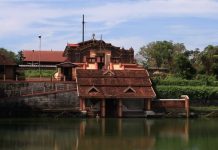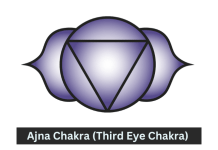Pratyahara is the fifth limb of yoga in the Ashtanga yoga system, as described by the sage Patanjali in his Yoga Sutras. In the vast tapestry of yogic practices, Pratyahara stands as a profound limb that bridges the external and internal realms of our being.
What Is Pratyahara?
The term “Pratyahara” is derived from the Sanskrit words “prati,” meaning “against” or “away,” and “ahara,” which can be translated as “food,” “nourishment,” or “input.” In the context of Pratyahara, “ahara” refers to the sensory inputs or stimuli that we consume through our five senses.
The traditional interpretation of Pratyahara as “withdrawal of the senses” suggests that it involves consciously redirecting our attention and focus inward, detaching ourselves from external sensory stimuli. However, it is essential to note that the concept of Pratyahara goes beyond a simple withdrawal or turning away from the senses.
A more nuanced understanding of Pratyahara views it as the conscious regulation and mastery of the senses. Rather than completely shutting down or suppressing the senses, Pratyahara entails controlling the mind’s reactions to sensory inputs and developing a state of balanced awareness. It involves consciously observing and moderating our responses to external stimuli, ensuring that they do not overpower or distract us.
Types of Pratyahara:
Within the realm of Pratyahara, various types offer unique approaches to sense withdrawal, each with its focus and purpose:
1. Indriya Pratyahara: This type revolves around withdrawing from external stimuli received through the five senses. By consciously redirecting our attention away from sensory inputs, we create an environment conducive to relaxation and inner exploration.
2. Prana Pratyahara: Prana, the universal life force energy, flows throughout our being. Prana Pratyahara involves balancing and regulating this energy to prevent excessive focus on the senses. By harmonizing the flow of prana, we cultivate a state of equilibrium and internal balance.
3. Karma Pratyahara: Karma Pratyahara emphasizes the control of action. It requires surrendering personal desires and attachments to outcomes, acting in selfless service to humanity or the divine. By transcending self-centered motivations, we cultivate a sense of detachment and compassion.
4. Mano Pratyahara: Mano Pratyahara centers around the withdrawal of the mind itself. Through conscious control of our reactions and redirection of attention, we detach from external distractions and focus inwardly. This type fosters self-awareness, clarity, and the ability to choose where we direct our mental energy.
Benefits of Pratyahara:
The practice of Pratyahara offers profound benefits that ripple through various aspects of our lives:
1. Enhanced Focus and Concentration: By withdrawing from external distractions, Pratyahara helps sharpen our focus and concentration abilities, supporting productivity and mental clarity.
2. Inner Stillness and Tranquility: Pratyahara creates a calm inner space, free from the incessant chatter of the senses. This cultivates a profound sense of peace, tranquility, and the ability to access deeper states of meditation.
3. Self-Awareness and Mindfulness: Through sense withdrawal, Pratyahara heightens our self-awareness and allows us to observe our thoughts, emotions, and inner experiences with greater clarity and objectivity.
4. Emotional Regulation: Pratyahara enables us to detach from external triggers, providing a tool for emotional regulation and preventing impulsive reactions to external stimuli.
How to Practice Pratyahara:
Incorporate Pratyahara into your daily life with these practices:
1. Silence: Dedicate periods of silence to quiet the senses and create a space for inner reflection and stillness.
2. Mindfulness: Practice mindful awareness of the body, senses, and present moment, observing without judgment or attachment.
3. Conscious Speech: Refrain from engaging in idle gossip or negative remarks, cultivating mindful and positive communication.
4. Sensory Moderation: Choose moments of sensory moderation, such as fasting or reducing exposure to excessive sensory stimuli, to explore the power of withdrawal.
5. Find a Quiet Space: Create a tranquil and distraction-free environment for your practice, allowing you to focus inwardly.
6. Comfortable Posture: Assume a comfortable seated posture, aligning the body to support relaxation and concentration.
7. Relaxation Techniques: Begin with relaxation techniques to release tension from the body and calm the mind.
8. Attention to Breath: Direct your attention to the natural rhythm of your breath, using it as an anchor to draw your focus inward.
9. Explore Different Techniques: Experiment with various techniques and find the ones that resonate with you, allowing you to deepen your practice of Pratyahara.
As you embark on the path of Pratyahara, remember that it is a gradual and personal journey. Allow yourself time and patience to develop a consistent practice, and embrace the transformative power of withdrawing the senses to unveil the vast realms of inner stillness, self-awareness, and spiritual growth.











































